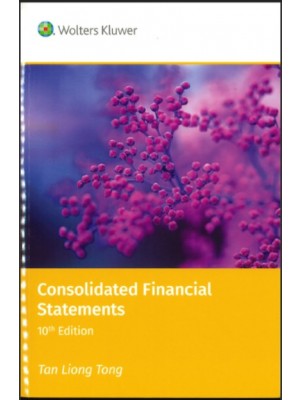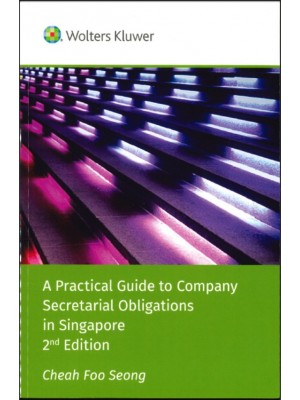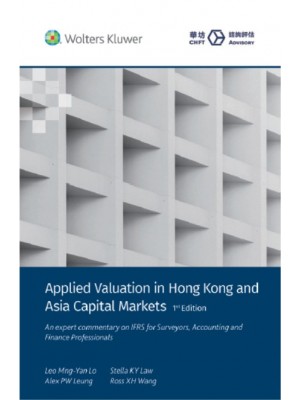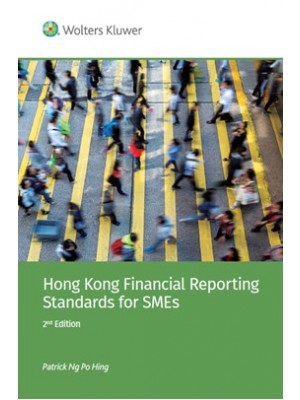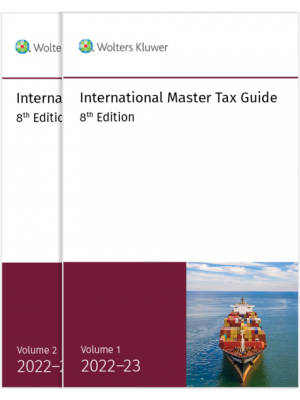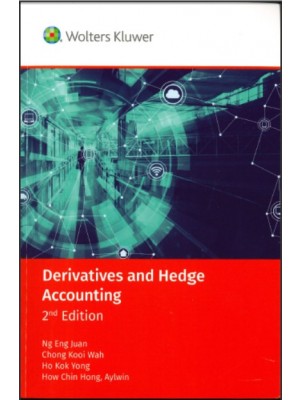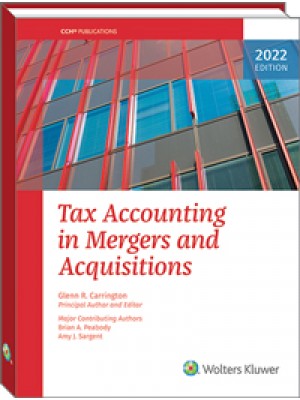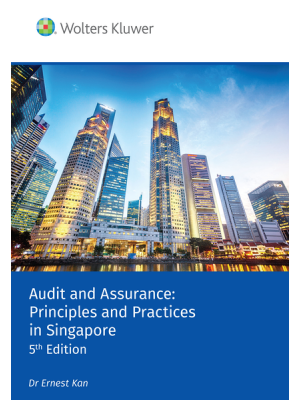Introduction .01-.11
Background .02-.05
Scope .06-.09
Information Included in This Guide .10
Guide to the Guide .11
1 Overview of the Private Equity and Venture Capital Industry and Its Investment Strategies .01-.81
Introduction .01-.13
Investment Strategies and Portfolio Company Life Cycle .14-.21
Typical Fund Structures and Role of Fund Manager .22-.27
Fund Entity (Limited Partnership) — The Investment Company .22-.24
Compensation, Fund Management Fees, and Carried Interest .25-.27
Investor Base .28-.38
Defined Benefit Pension Plans .30-.31
Sovereign Wealth Funds .32
Development Finance Institutions .33
Endowment Funds .34
High-Net-Worth Individuals and Family Offices .35-.37
Funds of Funds .38
Investment Horizon and Return Considerations .39-.45
Long-Term Orientation .39-.41
Risk Tolerance .42-.45
Impact on Portfolio Company Valuations .46-.57
Planning for "Exits" .46-.48
Strategic Buyers .49-.51
Public Equity Markets and IPO .52-.57
Considerations for Early-Stage Portfolio Companies .58-.73
The Portfolio Company’s Strategy and Positioning .66
Market Opportunity .67
Product Adoption and Customer Behavior .68
Competitive Landscape and Presence of a First-to-Market Advantage .69
Regulatory Approval and Other Gating Factors to Market Access .70
Use of Subject Matter Experts and Advisers .71
Executive Management and Their Track Records .72
Macro Investment Environment for the Particular Early-Stage Portfolio Company .73
Regulatory Environment .74-.77
U.S. Securities and Other Regulation .75-.77
Business Development Companies and Small Business Investment Companies .78-.81
Business Development Companies .78
Small Business Investment Companies .79-.81
2 Fair Value and Related Concepts .01-.45
Definitions of Value .01-.06
Why Do Financial Reporting Standards Require Fair Value? .07
Fair Value Concepts — FASB ASC 820 .08-.30
Fair Value and Exit Price .08-.10
Entry or Transaction Price .11
Transaction Costs .12
Unit of Account .13
Measurement Date .14
Principal (or Most Advantageous) Market .15-.20
Active Market .21-.24
The Fair Value Hierarchy .25-.27
Market Participants .28-.30
Fair Value Concepts — SEC Matters .31-.37
Securities Valued "in Good Faith" .34-.37
Other Relevant Nonauthoritative Guidance .38-.45
AICPA Accounting and Valuation Guide Valuation of Privately-Held-Company Equity Securities Issued as Compensation .38
AICPA Technical Questions and Answers .39-.41
Other Industry Guidance .42-.45
3 Market Participant Assumptions .01-.24
Introduction .01-.03
Market Participant Considerations .04-.06
Required Rate of Return .07-.12
Relevance of Observable Transactions in Developing Market Participant Assumptions .13
Consideration of Future Conditions .14-.16
Considering Whether Investors’ Interests are Aligned .17-.22
Types of Information Typically Considered .23-.24
4 Determining the Unit of Account and the Assumed Transaction for Measuring the Fair Value of Investments .01-.155
Introduction .01-.03
Relevant Technical Guidance .04-.12
Grouping Assets for Measuring Fair Value .13-.16
Time Horizon for the Investment .17-.24
Implications of the Initial Transaction for Determining the Grouping of Assets in the Assumed Exit Transaction .25-.30
Examples .31-.154
Example 1: 100% of equity held within a single fund (single reporting entity) .32-.56
Example 2: 45% of equity held in each of two funds managed by the same GP .57-.63
Example 3: Club deal, 30% of equity held in each of three funds managed by different GPs .64-.67
Example 4: 100% of equity in a reporting entity with a significant deferred tax asset .68-.73
Example 5: Debt and 100% of equity held within a single fund (single reporting entity) .74-.78
Example 6: Debt and 100% of equity held within different funds .79-.100
Example 7: Repurchased debt and 100% of equity in a single fund .101-.109
Example 8: Debt investment with options or warrants .110-.135
Example 9: Distressed equity investment with options or warrants .136-.146
Example 10: Multiple investments in different classes of equity .147-.154
Summary .155
5 Overview of Valuation Approaches .01-.109
Market Approach .06-.09
Considerations in Applying the Guideline Public Company Method .10-.45
Identification of Guideline Public Companies .11-.17
Number of Guideline Public Companies Selected for Comparison .18
How to Calculate Multiples and Which Multiples to Use .19-.31
Adjustments to Guideline Public Company Multiples to Enhance Comparability .32-.33
Adjustments to Subject Portfolio Company Financial Data .34-.35
Elimination of Multiples That are Not Meaningful .36-.37
How to Select Multiples to Apply to the Subject Portfolio Company in the Guideline Public Company Method .38-.42
Weighting of Multiple Type .43-.44
Enterprise Versus Equity-Level Multiples .45
Considerations in Applying the Guideline Company Transactions Method .46-.55
Limitations on Availability of Data .47
Assessing Relevant Time Period for Guideline Company Transactions .48
Number of Guideline Company Transactions Selected for Comparison .49
How to Select Multiples to Apply to the Subject Portfolio Company in the Guideline Company Transactions Method .50-.51
Transactions in the Portfolio Company’s Instruments .52-.55
Income Approach .56-.94
Significant Assumptions of the Income Approach .70-.90
Income and Market Approach Summary .91
Milestone-Driven Valuations .92-.94
Asset Approach .95-.109
Significant Assumptions of the Asset Approach .104-.109
6 Valuation of Debt Instruments .01-.32
Fair Value of Debt Instruments (When Debt is the Unit of Account) .05-.19
Value of Debt for the Purpose of Valuing Equity .20-.32
7 Valuation of Equity Interests in Simple Capital Structures .01-.11
8 Valuation of Equity Interests in Complex Capital Structures .01-.79
Rights Associated with Preferred Stock .09-.13
Methods of Estimating the Fair Value of Multiple Classes of Equity .14
Overall Comments Applicable to All Four Methods for Valuing Equity Interests .15-.17
Considerations Affecting the Selection of a Method for Valuing Equity Interests in Complex Capital Structures .18-.79
Scenario-Based Methods .20-.36
The Option Pricing Method .37-.53
The Current Value Method .54-.59
Hybrid Methods .60-.66
Considerations in Selecting a Methodology for Valuing Equity Interests .67-.79
9 Control and Marketability .01-.34
Controlling Versus Minority Interests .04-.23
Marketable Versus Nonmarketable Interests .24-.32
Assessing Discounts or Premiums Via Calibration .33-.34
10 Calibration .01-.47
Introduction .01-.04
Valuation Implications of Observed Transactions .05-.09
Applying Calibration in Valuing a Debt Investment in a Business .10-.12
Applying Calibration in Valuing an Equity Investment in a Business .13-.25
Market Approach .13-.18
Income Approach .19-.25
Relevance of Calibration as Time Passes .26-.27
Implications of Calibration When Considering Theoretical Discounts or Premiums Associated with Control and Marketability .28-.30
Inferring Value From Transactions in a Portfolio Company’s Instruments .31-.43
Consistency with Other Valuations Performed for the Portfolio Company .44-.47
11 Backtesting .01-.101
Introduction .01-.15
Relationship Between Backtesting and Evaluating Subsequent Events Under FASB ASC 855 .16-.20
Factors to Consider When Performing Backtesting .21
Illustrative Examples .22-.101
Example 1: Potential buyer’s synergies unknown .25-.33
Example 2: Unidentified operational issues .34-.43
Example 3: Subsequent IPO and significant price increase .44-.51
Example 4: Subsequent rescue of a company in financial distress .52-.58
Example 5: Bridge loan followed by down-round financing .59-.74
Example 6: Material nonpublic information with publicly traded shares .75-.79
Example 7: Subsequent working capital adjustment and contract claims .80-.85
Example 8: Unidentified investor or market participant .86-.92
Example 9: Clinical trial results .93-.101
12 Factors to Consider at or Near a Transaction Date .01-.23
Introduction .01-.05
Fair Value Considerations at Initial Recognition .06-.10
Fair Value Considerations at Interim Measurement Dates .11-.13
Fair Value Considerations at or Near Exit .14-.15
Illustrative Examples .16-.21
Impact of Transaction Costs on Calibration .22-.23
13 Special Topics .01-.100
Introduction .01
When an Enterprise Has Traded Securities .02-.24
P × Q Rule .03-.07
Underwriter Lock-Ups and SEC Rule 144A .08-.14
Similar Versus Identical Securities .15-.19
Significant Decrease in Volume or Activity or Distressed Transactions .20-.24
Pricing Services and Broker and Dealer Quotes .25-.33
Background .25-.28
Management Responsibilities .29-.33
Indicative Offers .34-.36
Insider Financing Rounds .37-.38
Early-Stage Companies with No Recent Financing Rounds .39-.43
Rights and Privileges Not Enforced .44-.49
Commitments to Portfolio Companies .50-.60
Loan Commitments .50-.54
Equity Commitments .55-.60
Guarantees .61-.64
Dilution .65-.76
Anticipated Future Dilution .66-.72
Changes to Anticipated Future Dilution .73
Impact of Share-Based Awards .74
Current Dilution .75
Summary .76
Options and Warrants, Convertible Notes, and Related Instruments .77-.82
Contractual Rights (Contingent Consideration) .83-.87
Private Fund Interests .88-.100
NAV Practical Expedient .88-.95
Alternatives to the NAV Practical Expedient .96
Secondary Transactions in an Interest in a Private Fund .97-.99
Discounted Cash Flows .100
14 Frequently Asked Questions .01
Introduction .01
Material Covered in the Guide Q&A 14.1: Material Covered in the Guide
Q&A 14.2: Intended Use of the Guide
Q&A 14.3: Managing Complexity of the Valuation Process
Q&A 14.4: Getting Started
Q&A 14.5: Impact of the Guide
Q&A 14.6: Consistency with Other Guidance
Q&A 14.7: Measurements at Net Asset Value Internal Controls Over Valuations
Q&A 14.8: Internal Control Policies and Procedures for Valuations
Q&A 14.9: Mandatory Performance Framework
Q&A 14.10: Third-Party Opinions
Q&A 14.11: Inherent Uncertainty of the Estimate
Q&A 14.12: Conservativism in Fair Value Estimates
Q&A 14.13: Bid/Ask Spread Considerations Value Changes Over Time
Q&A 14.14: Frequency of Preparation of Fair Value Estimates
Q&A 14.15: Carrying Value at Cost
Q&A 14.16: Value Changes Over Time
Q&A 14.17: Adjusting the Value of the Portfolio From Period to Period
Q&A 14.18: Portfolio Company Financial Information Used in the Valuation Analysis
Q&A 14.19: Shelf Life of Value-Related Information Reconciliation with Other Valuations
Q&A 14.20: Reliance on IRC Section 409A or FASB ASC 718 Reports
Q&A 14.21: Differences in Fair Value Estimates
Q&A 14.22: Valuation Diligence on Club Deals Considering Risks and Outcomes Associated with Contractual Rights
Q&A 14.23: Valuation of an Equity Interest with a Put Right
Q&A 14.24: Valuation of Contingent Consideration Q&A 14.25: Valuation of an Interest in a Company That Has Filed for Bankruptcy Valuing Businesses for the Purpose of Valuing Investments
Q&A 14.26: Earnings Normalization
Q&A 14.27: Incorporating Stock-Based Compensation Into the Valuation
Q&A 14.28: Treatment of Synergies
Q&A 14.29: Considering Multiple Lines of Business Within a Single Portfolio Company
Q&A 14.30: Using Data From Guideline Public Companies When the Portfolio Company is Not Really Comparable
Q&A 14.31: Alternatives to Using Guideline Public Companies When the Portfolio Company is Not Really Comparable
Q&A 14.32: Addressing the Lag in Available Financial Information for the Guideline Public Companies as of the Measurement Date
Q&A 14.33: Incorporating Discounts or Premiums Into the Enterprise Value
Q&A 14.34: Private Equity Cost of Capital
Q&A 14.35: Company-Specific Assumptions Calibration
Q&A 14.36: Holding Value at Cost
Q&A 14.37: Insider Financing Rounds
Q&A 14.38: Tranched Financing
Q&A 14.39: Considering Transaction Costs in Calibration
Q&A 14.40: Calibrating to a Transaction with Assumed Debt
Q&A 14.41: Calibrating to a Transaction with a Contingent Tax Liability
Q&A 14.42: Offers to Purchase
Q&A 14.43: Repayment of Debt Investments
Q&A 14.44: Calibration to Broker Transactions in Public Company Securities
Q&A 14.45: Calibration for Real Estate Investments Value of Debt for the Purpose of Valuing Equity
Q&A 14.46: Valuing Debt for the Purpose of Valuing Equity Using the Book Value or Face Value
Q&A 14.47: Valuing Debt for the Purpose of Valuing Equity Using the Traded Price
Q&A 14.48: Using the Zero-Coupon Bond Equivalent for Including Debt in the Option Pricing Method
Q&A 14.49: Impact of Estimating Equity Value Using a Value of Debt Lower Than Face Value When Both the Enterprise Value and the Value of Debt Have Declined
Q&A 14.50: Impact of Estimating Equity Value Using the Value of Debt for the Purpose of Valuing Equity When the Enterprise Value Has Remained Unchanged Q&A 14.51: Methodologies for Valuing Equity in a Business with Nonperforming Distressed Debt Valuing Equity Interests in Complex Capital Structures
Q&A 14.52: Use of the PWERM
Q&A 14.53: Use of the Current Value Method
Q&A 14.54: Use of the Option Pricing Method
Q&A 14.55: Different Values for Earlier and Later Round Investments
Q&A 14.56: Value of Liquidation Preferences
Q&A 14.57: Treatment of Equity Interests with Different Liquidation Preferences
Q&A 14.58: Allocation Methods When Using Postmoney Value
Q&A 14.59: Using the OPM as the Fund’s Standard Approach for All Portfolio Companies
Q&A 14.60: Two Funds Under the Same Investment Company Manager Hold Different Classes of Equity
Q&A 14.61: Measuring Volatility for Early-Stage Companies Control and Marketability
Q&A 14.62: Basis of Value — Control Considerations When Measuring Enterprise Value
Q&A 14.63: Valuation Approaches and Controlling and Noncontrolling Interests
Q&A 14.64: Applying Discounts for Lack of Marketability to the Total Equity Value
Q&A 14.65: Illiquidity and Marketability of Investments
Q&A 14.66: Basis of Valuation
Q&A 14.67: Differences in the Basis of Valuation for Controlling Versus Minority Positions
Q&A 14.68: Valuations with Multiple Related Fund Investors Information to Be Considered in the Valuation
Q&A 14.69: Incomplete Information
Q&A 14.70: Use of Nonpublic ("Inside") Information
Q&A 14.71: Incorporating Nonpublic Information Into the Valuation
Q&A 14.72: Postvaluation Event (Customer Financial Condition) — Assessment as Known or Knowable
Q&A 14.73: Postvaluation Event (Product Approval) — Assessment as Known or Knowable
Q&A 14.74: Expected Financing — Effect on Valuation
Q&A 14.75: Measuring Fair Value When the Volume or Level of Activity for an Asset or a Liability with Observable Prices or Quotes Has Significantly Decreased — Applicability of Guidance
Q&A 14.76: Measuring Fair Value When the Volume or Level of Activity for an Asset or a Liability with Observable Prices or Quotes Has Significantly Decreased — Objective of a Fair Value Measurement
Q&A 14.77: Measuring Fair Value When the Volume or Level of Activity for an Asset or a Liability with Observable Prices or Quotes Has Significantly Decreased — Rules of Thumb or Quantitative Thresholds Remeasurements Relating to Changes in Portfolio Company Financials
Q&A 14.78: Remeasurements Relating to Restatements of the Portfolio Company’s Financial Statements
Q&A 14.79: Remeasurements Relating to Accounting Changes
Appendix
A Valuation Process and Documentation Considerations
B Valuation Reference Guide
C Valuation Case Studies
Glossary
Index of Pronouncements and Other Technical Guidance
Subject Index











